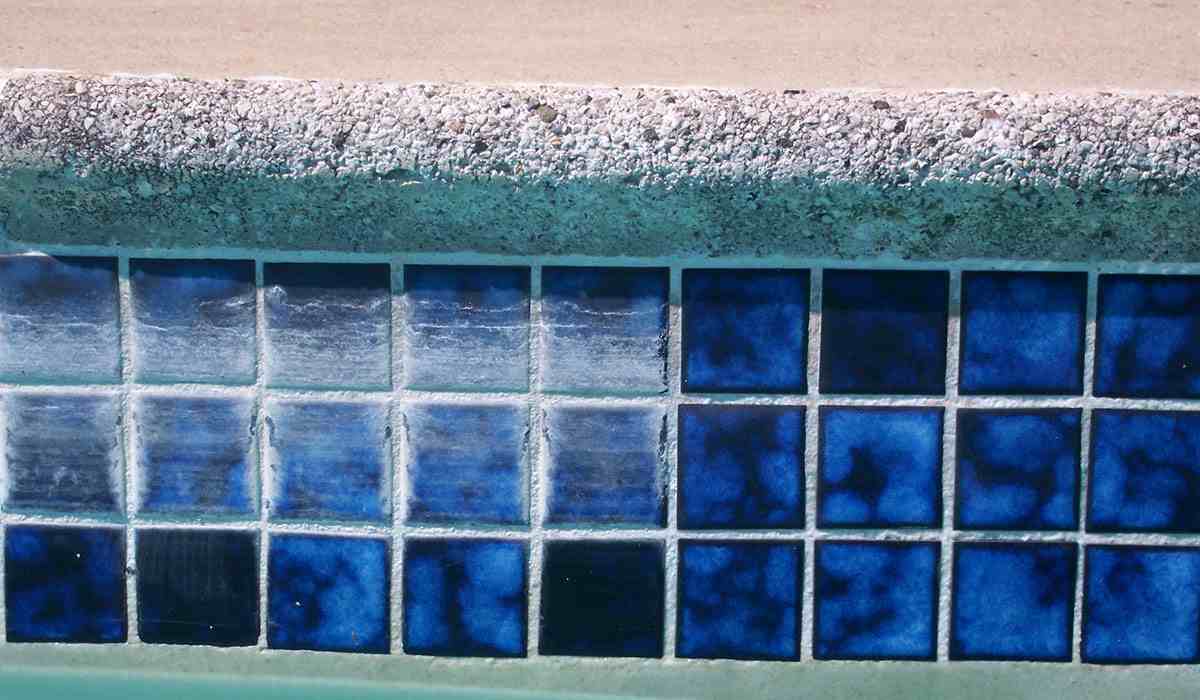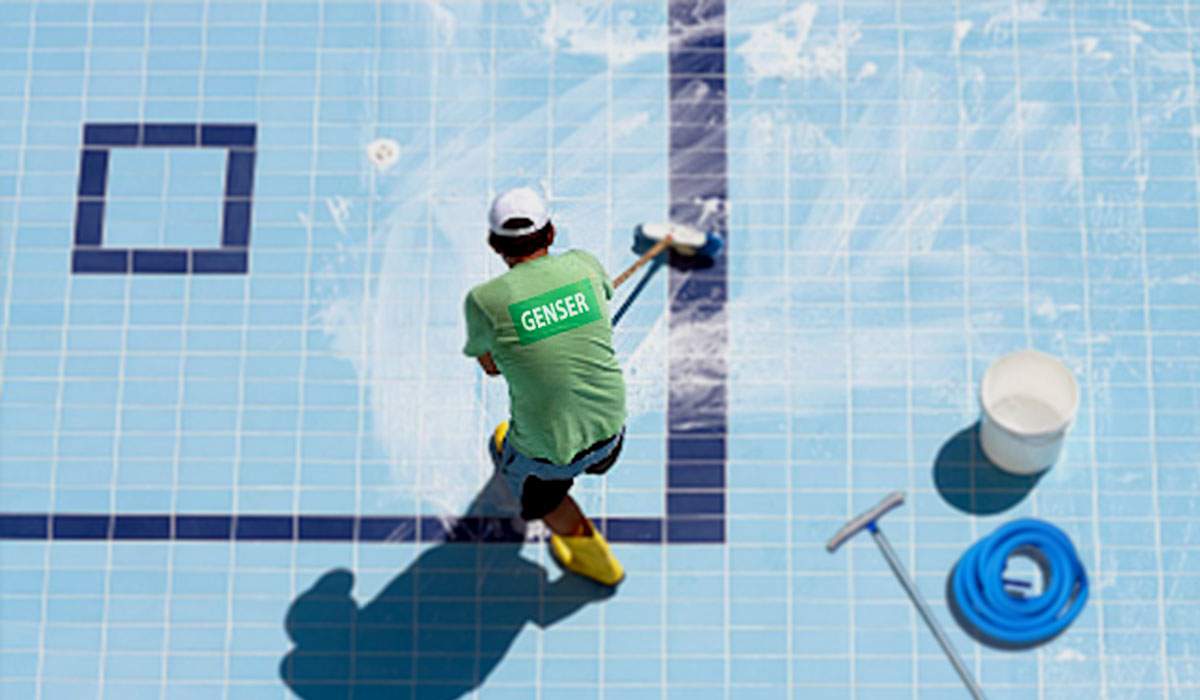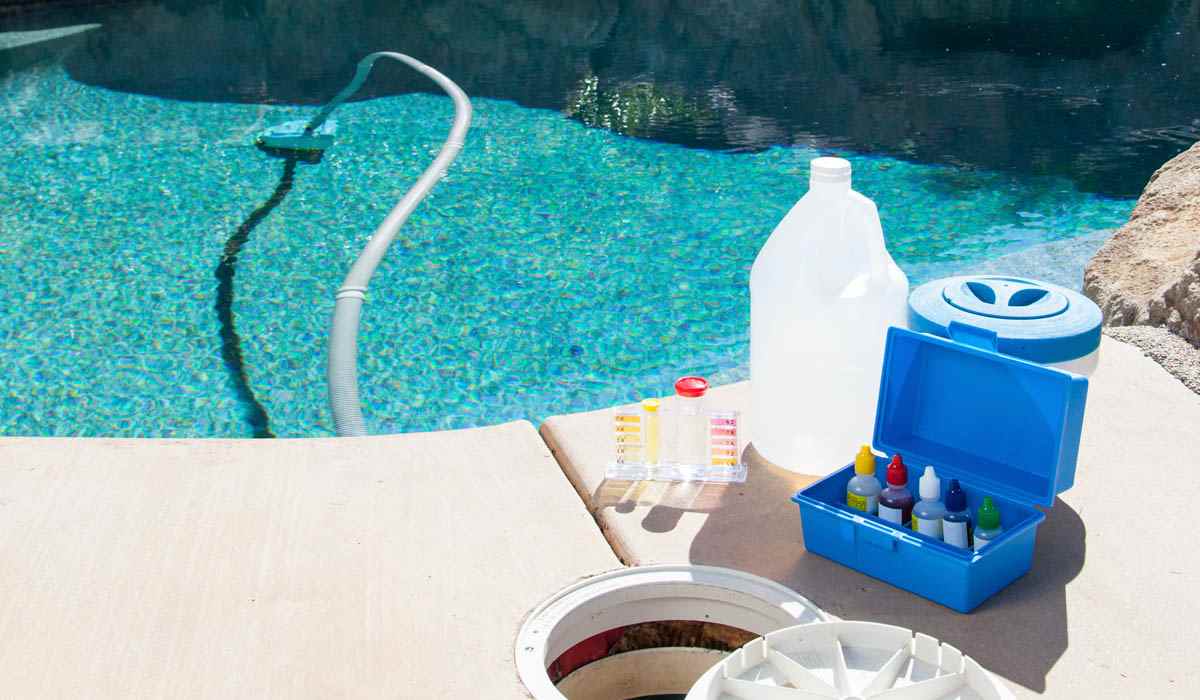Pool tile grout is utilized to repair or replace pool tiles. The scope of the project and the desired appearance of the grout are the most significant factors to consider when choosing grout. The majority of projects will benefit from a waterproof, sanded epoxy, or cement grout for pool tile. Typically, there are two types of grout used for pool tile: Portland cement grout and epoxy grout. Epoxy is harder than cement, resistant to stains, and exceptionally durable. However, it is considerably more expensive than cement. Thus, concrete grout is frequently the most cost-effective alternative for large-scale pool upgrades or restorations. Due to its nearly limitless shelf life, epoxy grout may be suitable for smaller, intermittent projects. When tiling a pool, it is essential to use a waterproof grout to prolong its life; unlike other grout applications, pool tile grout spends the bulk of its time submerged.  Normal grouts will still function under these conditions, but their durability will be diminished. In general, epoxy grouts are intrinsically waterproof, but cement grouts with comparable qualities are uncommon and considered specialty grouts. Color is another consideration while picking grout. A well-maintained pool may add significant value to a property, but uneven tile grout can diminish its charm. Because grout fades and discolors with time, it is quite likely that grout used for small repairs will not match the original grout color. Retiling is the only approach to entirely eliminate this problem. Numerous suppliers of grout will offer color swatches that may be used to match grout colors. If the grouting work needs filling gaps larger than 14 inch (6.4 mm), it is generally recommended to use grout that contains sand, which helps the grout adhere more securely. Pool tiles are often spaced more apart than conventional tiles and can be laid vertically, necessitating the use of sanded grout. Choose a pool tile grout with a setting time commensurate with the scope of the project and the grouter's experience. A first-time grout user may struggle to complete a large project before the grout becomes unworkable if the setting period is too short. However, extended grout curing times may frustrate more seasoned users. Epoxy grout is impermeable, resistant to stains, and requires no sealing. Epoxy grout is a fantastic choice for swimming pools. For the waterline tile, which is the location where the pool plaster and tile meet, cement-based grout is typically utilized. Commonly employed in pool tiling, cement-based grout is nonetheless more susceptible to stains and chemical degradation. Despite the presence of polymers and sealants, cement grout is not as durable as epoxy grout. Pool Tile has two key functional functions.
Normal grouts will still function under these conditions, but their durability will be diminished. In general, epoxy grouts are intrinsically waterproof, but cement grouts with comparable qualities are uncommon and considered specialty grouts. Color is another consideration while picking grout. A well-maintained pool may add significant value to a property, but uneven tile grout can diminish its charm. Because grout fades and discolors with time, it is quite likely that grout used for small repairs will not match the original grout color. Retiling is the only approach to entirely eliminate this problem. Numerous suppliers of grout will offer color swatches that may be used to match grout colors. If the grouting work needs filling gaps larger than 14 inch (6.4 mm), it is generally recommended to use grout that contains sand, which helps the grout adhere more securely. Pool tiles are often spaced more apart than conventional tiles and can be laid vertically, necessitating the use of sanded grout. Choose a pool tile grout with a setting time commensurate with the scope of the project and the grouter's experience. A first-time grout user may struggle to complete a large project before the grout becomes unworkable if the setting period is too short. However, extended grout curing times may frustrate more seasoned users. Epoxy grout is impermeable, resistant to stains, and requires no sealing. Epoxy grout is a fantastic choice for swimming pools. For the waterline tile, which is the location where the pool plaster and tile meet, cement-based grout is typically utilized. Commonly employed in pool tiling, cement-based grout is nonetheless more susceptible to stains and chemical degradation. Despite the presence of polymers and sealants, cement grout is not as durable as epoxy grout. Pool Tile has two key functional functions.  Pool tile can either be used to cover the whole pool surface or to line the waterline. In some types of swimming pools, the waterline is a belt of Pool Tile that encircles the swimming pool. It is situated at the top edge of the pool wall, typically just above the pool plaster. Its purpose is to maintain the pool's water level above the plaster, to keep the plaster from drying out and breaking. This region's grout will consist of sections that are permanently buried and portions that are above sea level. Using the incorrect thin-set while putting tiles may result in their slippage in the future (or in the pool as in this case). When the installer uses poor grout that is not designed for use in damp conditions, there is a second installation problem that leads to tile fall. Using a homemade concrete mixture or thin-set as a substitute for grout designed for use with water is not a good idea. In general, taking shortcuts is a known way to cause problems with your pool. The cement base beneath improperly installed tile may also degrade. This is often the result of shoddy workmanship during tile installation, which permits water to escape through tile or grout gaps. Additionally, poor water chemistry might lead to tile damage.
Pool tile can either be used to cover the whole pool surface or to line the waterline. In some types of swimming pools, the waterline is a belt of Pool Tile that encircles the swimming pool. It is situated at the top edge of the pool wall, typically just above the pool plaster. Its purpose is to maintain the pool's water level above the plaster, to keep the plaster from drying out and breaking. This region's grout will consist of sections that are permanently buried and portions that are above sea level. Using the incorrect thin-set while putting tiles may result in their slippage in the future (or in the pool as in this case). When the installer uses poor grout that is not designed for use in damp conditions, there is a second installation problem that leads to tile fall. Using a homemade concrete mixture or thin-set as a substitute for grout designed for use with water is not a good idea. In general, taking shortcuts is a known way to cause problems with your pool. The cement base beneath improperly installed tile may also degrade. This is often the result of shoddy workmanship during tile installation, which permits water to escape through tile or grout gaps. Additionally, poor water chemistry might lead to tile damage.  Calcium hardness levels between 200 and 400 PPM are preferred. This level of calcium hardness inhibits the corrosion of water. Corrosive water is undesirable because it reacts negatively with any metals in your pool (such as pool equipment) and tile grout. When designing some of the more complex pool mosaic tile patterns, you should seek the assistance of a pool tile expert. Both glass subway tile and hexagon tile are attractive yet challenging patterns. In this use, epoxy grout is exceptionally durable; it may be submerged or exposed to the environment without degrading. In addition to broken tiles, there are various other obvious signs of tile problems. This consists of the following: Tile Staining - Staining happens when minerals from grout adhere to the tile surface. If the tile is undamaged, you might anticipate white flecks or a generally worn look. If the stained tile is not irreparable, an acid wash can often restore its appearance. Due to the presence of an acid, it is not recommended for DIY projects. Additionally, protective clothing is required for this potentially dangerous task. Expect to pay some cost to have a pool technician use an acid wash to remove the tile stains. Costs will vary significantly dependent on pool size, pool accessibility, and the company carrying out the project. -A cracked tile can be mended if the damage is minimal. There are tile repair kits available for this purpose. Most tile repair kits include mortar and water that may be combined to create an adhesive. It may be challenging to remove the broken tile. Initially, remove the broken tile using a screwdriver or chisel. When doing so, take care not to damage any uncracked tiles. After the patch kit glue is prepared, just apply it to the wall behind the tile (called a beam). Before installing the new tile, ensure that the beam is completely covered with adhesive. At least 24 hours must pass before attempting to re-grout. -Grout Corrosion - Never undervalue the importance of quality grout. If the grout has deteriorated, don't be surprised if pool tiles begin to fall out. Examine grout often for indications of degradation. If your grout is in bad condition, it may be time to replace it.
Calcium hardness levels between 200 and 400 PPM are preferred. This level of calcium hardness inhibits the corrosion of water. Corrosive water is undesirable because it reacts negatively with any metals in your pool (such as pool equipment) and tile grout. When designing some of the more complex pool mosaic tile patterns, you should seek the assistance of a pool tile expert. Both glass subway tile and hexagon tile are attractive yet challenging patterns. In this use, epoxy grout is exceptionally durable; it may be submerged or exposed to the environment without degrading. In addition to broken tiles, there are various other obvious signs of tile problems. This consists of the following: Tile Staining - Staining happens when minerals from grout adhere to the tile surface. If the tile is undamaged, you might anticipate white flecks or a generally worn look. If the stained tile is not irreparable, an acid wash can often restore its appearance. Due to the presence of an acid, it is not recommended for DIY projects. Additionally, protective clothing is required for this potentially dangerous task. Expect to pay some cost to have a pool technician use an acid wash to remove the tile stains. Costs will vary significantly dependent on pool size, pool accessibility, and the company carrying out the project. -A cracked tile can be mended if the damage is minimal. There are tile repair kits available for this purpose. Most tile repair kits include mortar and water that may be combined to create an adhesive. It may be challenging to remove the broken tile. Initially, remove the broken tile using a screwdriver or chisel. When doing so, take care not to damage any uncracked tiles. After the patch kit glue is prepared, just apply it to the wall behind the tile (called a beam). Before installing the new tile, ensure that the beam is completely covered with adhesive. At least 24 hours must pass before attempting to re-grout. -Grout Corrosion - Never undervalue the importance of quality grout. If the grout has deteriorated, don't be surprised if pool tiles begin to fall out. Examine grout often for indications of degradation. If your grout is in bad condition, it may be time to replace it.  Also, bear in mind that tile gaps caused by failing grout may constitute a hazard to swimmers, who may experience scratches or cuts if they come into contact with the gaps. If you are intending to make a pool and need pool tiles and adequate grout, contact our sales managers.
Also, bear in mind that tile gaps caused by failing grout may constitute a hazard to swimmers, who may experience scratches or cuts if they come into contact with the gaps. If you are intending to make a pool and need pool tiles and adequate grout, contact our sales managers.
💰 Tenfold your income 💎
